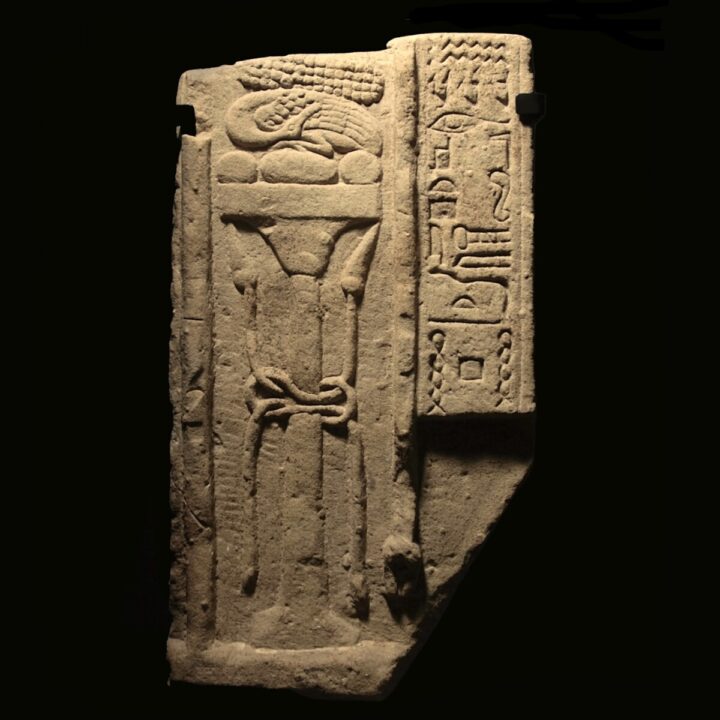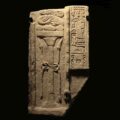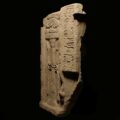Large Ptolemaic Sandstone Relief with Offering Table and Osiris Formula
Culture: Egyptian
Period: Ptolemaic period, 332-30 B.C.
Material: Sandstone
Dimensions: 66.5 cm high
Price: Sold
Ref: 1492
Provenance: Geoffrey Turner Ancient Art, acquired in 1975. There acquired by Galerie Puhze and published in “Kunst der Antike”, catalogue 15, no. 230, Freiburg 2001. Thence Bonhams auction on 16 May 2002, lot 463. There acquired by the prominent English interior architect Robert Kime (1946-2022) for his private collection. Thence in a family estate.
Condition: On the right edge a small piece outside of the image area is reattached, otherwise unrestored and very beautifully preserved.
Description: Large, important sandstone relief dating to the Ptolemaic period, which possibly once adorned a temple wall. The left side depicts an abundantly decorated offering table which stands on a lotus blossom. To the left and right of the blossom two papyrus umbels, which are knotted together approximately in the middle of the lotus stem. The two coat of arms plants of Egypt stand for the union of both lands – the lotus is the symbol of Upper-, the papyrus for Lower Egypt. On the offering table are three bread loaves, above a duck, and on it a corncob. A vertical sceptre separates the offering table from a finely drawn hieroglyphic inscription on the right side. The text is about an offering formula for god Osiris. The depiction of the abundantly decorated offering table, which is flanked by a lotus blossom, carried by papyrus umbels, dates at least back to the New Kingdom. See for the depiction on a relief in the sun court of the funerary temple of pharaoh Seti I in Thebes West. On a custom-made metal base.






